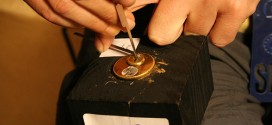 The word heuristics comes from the Greek “find” or “discover” and refers to experience-based techniques for problem solving, learning, and discovery – Wikipedia. Judea Pearl in ‘Heuristics: Intelligent Search Strategies for Computer Problem Solving’ defines heuristics as strategies using readily accessible, though loosely applicable, information to control problem solving in human beings and machines.
The word heuristics comes from the Greek “find” or “discover” and refers to experience-based techniques for problem solving, learning, and discovery – Wikipedia. Judea Pearl in ‘Heuristics: Intelligent Search Strategies for Computer Problem Solving’ defines heuristics as strategies using readily accessible, though loosely applicable, information to control problem solving in human beings and machines.
Intuition is closely related to heuristics because intuition can be interpreted as layers of experience and knowledge in an area. The greater your experience of various aspects of the area, and the more niche the area – enabling a concentration of experience – the stronger your intuition can be argued to be.
So in fact we all use heuristics all the time in making judgements, problem solving and decision making.
The problem with heuristics and intuition could be seen as incomplete information in the face of complex problems. Experience and loosely applicable information as the basis from which to solve problems immediately sounds potentially flawed. This is even more of a problem when we recognise that emotions play a substantial role in heuristics and intuition. The errors we make because of the use of heuristics and intuition are called cognitive biases.
We immediately recognise the heuristics of trial & error and rules of thumb, and we have a sense of how they are flawed – arguably because less emotion is used in this type of shortcut. We need to be far more self aware to spot our cognitive biases when we use other heuristics. In fact, we often don’t recognise that we’re using heuristics, so to maintain awareness of the potential cognitive biases inherent in them is very challenging.
The following are the top 4 tips to use heuristics in problem solving and minimise errors:
- Awareness: it may initially seem obvious, but maintain awareness of when you are using heuristics and check through the list of applicable cognitive biases that could be causing you to make errors. This self-check is not as hard to activate as it may first appear. Try and create a habit to get in to this thought loop when you are either making quick judgements that feel easy and intuitive or slow judgements that feel hard and involve lots of information. Starting at either end of the judgement and decision-making spectrum will then help you move to the centre with more practice
- Abstraction: Standing back from the task and imagining coaching others through the problem solving process is a powerful way to highlight the cognitive flaws that you might otherwise make. List the problem solving steps your imaginary person should go through. Highlight the data and decision points required. This act of abstraction makes you cognitively process the same information differently.
- Application: imagine applying in a radically different context the same depth or volume of information that you’re currently considering applying in solving your problem. Would you pull a product in a pharma company with the same quality suspicions as you have in your software company? Why is your answer different? What different information would you need to have certainty in your solution to a problem?
- Constant investment in experience: if intuition is layered knowledge and expertise which comes from your depth of experience, and intuition drives decision-making around problems, then deeper experience lessens problem-solving flaws. Ultimately the incomplete or loosely applicable information is being better validated by your expertise.
 Constant Mentor Goal Setting & Interventions for Leaders
Constant Mentor Goal Setting & Interventions for Leaders




